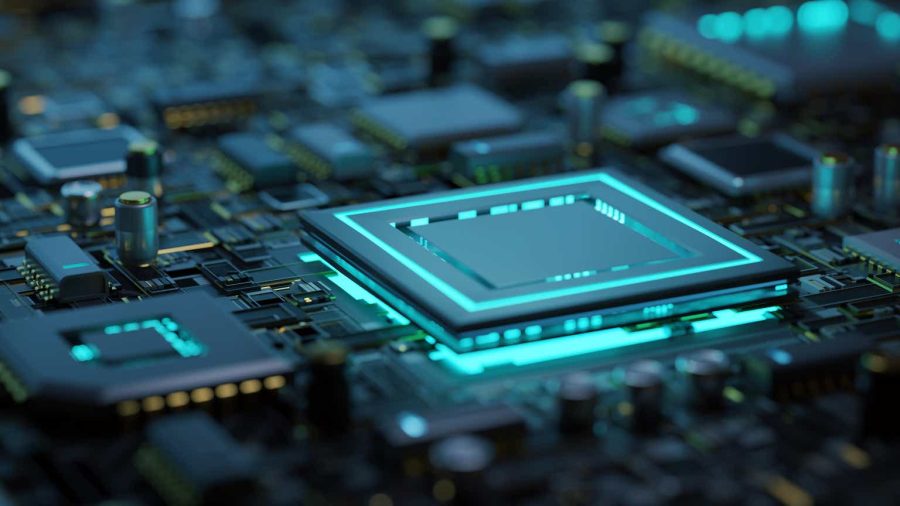July 14, 2024 This Week Top S&P 500 Gainers & Losers
Tesla Q2: The Bottom Is Likely In
Tesla: Time To Take Profits
Microsoft: The Q4 Results Should Surprise You
Tesla: Optimus And FSD Probably Won’t Save The Day
April 23, 2024 Maximizing Profits: When is the Right Time to Sell Your Business?
April 12, 2024 Improve Your Financial Status: A How-To Guide
April 12, 2024 How ZIM Integrated Container Tracking is Revolutionizing Global Trade
March 15, 2024 6 Best Growth Stocks To Buy Now According to Metatrader 5

Micron (MU) Stock Forecast for 2024–2028. Sell or Buy?
Updated: July 27, 2024 (07:28)
Sector: TechnologyThe share price of Micron Technology, Inc. (MU) now
50/200 Day Moving Average: $130.85 / $100.06
This figure corresponds to the Average Price over the previous 50/200 days. For Micron stocks, the 50-day moving average is the resistance level today.
For Micron stocks, the 200-day moving average is the support level today.
Are you interested in Micron Technology, Inc. stocks and want to buy them, or are they already in your portfolio? If yes, then on this page you will find useful information about the dynamics of the Micron stock price in 2024, 2025, 2026, 2027, 2028. How much will one Micron share be worth in 2024 - 2028?
When should I take profit in Micron stock? When should I record a loss on Micron stock? What are analysts' forecasts for Micron stock? What is the future of Micron stock? We forecast Micron stock performance using neural networks based on historical data on Micron stocks. Also, when forecasting, technical analysis tools are used, world geopolitical and news factors are taken into account.
Micron stock prediction results are shown below and presented in the form of graphs, tables and text information, divided into time intervals. (Next month, 2024, 2025, 2026, 2027 and 2028) The final quotes of the instrument at the close of the previous trading day are a signal to adjust the forecasts for Micron shares. This happens once a day.
Historical and forecast chart of Micron stock
The chart below shows the historical price of Micron stock and a prediction chart for the next month. For convenience, prices are divided by color. Forecast prices include: Optimistic Forecast, Pessimistic Forecast, and Weighted Average Best Forecast. Detailed values for the Micron stock price can be found in the table below.
Long-term forecasts by years.

Forecasting Micron's (MU) Stock Rates: Key Factors for Investors

When forecasting MU stock rates, several imminent factors will significantly influence Micron's performance. Analysts should closely monitor the demand for Micron’s High Bandwidth Memory (HBM) chips, particularly the HBM3E and upcoming generations like HBM4 and HBM4E. These advanced chips are driving the company’s growth due to their importance in AI and data center technologies. Confirmed sales for eFY25 and predictions for sustained high demand signal a strong revenue stream and margin expansion, crucial for MU stock value.
Future Capacity Improvements
Micron’s strategic investments in fab construction in Idaho (2027) and New York (2028) are pivotal. These future-ready facilities, equipped with cutting-edge EUV lithography, will boost production capacity and technological prowess, ensuring Micron meets the rising demand for advanced memory chips. These projects, though capital-intensive, promise long-term benefits such as improved production efficiency and higher yield rates, positively impacting MU stock forecast.
Analysts also need to factor in the cyclical nature of the semiconductor industry. Historical trends suggest that growth phases often follow downturns. With increased demand for AI-driven applications and data centers, Micron is poised for a positive upswing, enhancing the MU stock buy or sell decisions. Macro-economic factors, consumer spending behaviors, and potential regulatory and investment risks should also be considered. Effective risk management and timely rollouts of new fabs may outweigh short-term financial pressures, favorably affecting MU stock price predictions.
Review the original Analysis

Understanding Forecasts: The Key Drivers Behind Micron (MU) Stock Rates

Forecasting the company MU stocks rate involves a nuanced understanding of several influential factors. By breaking down these elements, analysts can better predict future changes in Micron's stock price, making more accurate MU stock forecasts.
Key Influencers of MU Stock Price
Cyclical Forces: The semiconductor industry is known for its boom and bust cycles. These cyclical forces are critical. For instance, MU's recent 27% rally to an all-time high confirms the importance of timing in cyclical stock investments.
AI-Related Demand: The rising demand from AI technology creates a significant tailwind for MU. During the last financial reports, DRAM revenues surged 76% YOY and NAND saw over 100% growth due to AI applications, highlighting substantial growth potential.
Inventory Levels: Elevated inventory levels pose risks, potentially impacting margins and profitability if demand doesn't match expectations. High inventory can lead to operational issues, affecting cash flow and pricing decisions.
Market Competition: Competition within the memory chip market pressures MU to maintain its competitive edge. The market often sees price wars that may compress margins, affecting MU's overall profitability and stock rates.
Geopolitical Risks: MU's exposure to China introduces geopolitical risks. Trade tensions and regulatory changes between the U.S. and China can disrupt supply chains and sales, injecting volatility into MU stock prices.
- For accurate MU stock price predictions, analysts should focus on cyclical forces, leveraging historical data to anticipate booms and busts.
- Understanding the impact of AI-related demand trends can help forecast significant revenue hikes.
- Monitoring inventory levels is crucial to assessing potential operational risks.
- Evaluating market competition provides insights into possible margin compressions.
- Keeping an eye on geopolitical developments, particularly involving China, can prepare analysts for sudden stock price movements.
With these factors in mind, analysts can refine their Micron stock forecast, determining whether MU is a good stock to buy or sell. By integrating cyclical trends, AI-induced growth, inventory management, competitive dynamics, and geopolitical risks, investors can make informed decisions on their MU stock buy or sell strategies.
Review the original Analysis

Unveiling Micron's Future: A Deep Dive into MU Stock Predictions

Forecasting the trajectory of MU stock rates hinges on a nuanced understanding of various factors poised to sculpt the landscape of Micron's performance. Among these, business performance, valuation, and technical analysis emerge as pivotal influences, each casting a distinct shadow over the company's market fortunes. Analysts aiming to crack the code of Micron's stock price movements must judiciously weigh these elements, crafting predictions with both precision and insight.
Deciphering the Variables: Key Influences on Micron's Market Movements
The cyclicality of Micron's memory and storage solutions sector promises to be a major determinant of business performance, affecting MU stock forecasts. This, coupled with stiff competition and the constant necessity for hefty capital investments, puts a dampener on Micron's growth prospects when contrasted with industry titans like Nvidia. Such dynamics not only underscore the importance of business performance in MU stock predictions but also highlight the underlying challenges.
Valuation metrics, infusing the debate with another layer of complexity, play a pivotal role. The balancing act between Micron's forward P/E ratio, P/S ratio, and PEG ratio, juxtaposed against its historical earning performances, requires analysts to adopt a measured approach in evaluating MU stock price predictions. Lastly, the art of technical analysis—armed with tools like RSI and MACD, alongside seasonal price trends—opens avenues for identifying opportune moments to buy or sell Micron stock, making it an indispensable tool in the arsenal of every astute analyst.
Intricately intertwined, these factors provide a roadmap for navigating MU stock forecasts. Understanding their interplay offers a blueprint for anticipating MU stock price target adjustments, elevating the craft of prediction from mere speculation to strategic foresight.
Review the original Analysis
Micron Technology Incorporation manufactures microchips and memory devices such as hard drives and flash drives. The company’s products are sold under the brands Crucial Technology and Lexar.
In 2012 and 2013, Micron Technology entered the TOP 100 Innovative Corporations according to Thomson Reuters, along with Apple, Bayer and Canon. In 2016, the company earned $ 12.4 billion.
In 1978, the Parkinson brothers, David Wilson and Doug Pitman decided to start their own business: advising semiconductor engineers. The partners collected investments and started work. In 1981, they decided to move away from consulting and try themselves in production: they built the first factory and released their own memory carrier – 64K DRAM. Since then, Micron has been developing and manufacturing semiconductor storage devices. In 2005, the company teamed up with Intel to develop new types of memory, in 2011 – repeated the experience. Upon completion of the cooperation, Micron received exclusive rights to all joint developments with Intel.
Micron daily forecast for a month
| Date | Target | Pes. | Opt. | Vol., % |
|---|---|---|---|---|
| Jul 29 | 111.83 | 110.08 | 113.15 | 2.78 |
| Jul 30 | 111.76 | 111.00 | 113.15 | 1.93 |
| Jul 31 | 110.42 | 108.83 | 111.28 | 2.25 |
| Aug 01 | 109.45 | 107.98 | 110.85 | 2.66 |
| Aug 02 | 110.89 | 109.81 | 112.31 | 2.28 |
| Aug 03 | 112.82 | 111.45 | 113.59 | 1.92 |
| Aug 04 | 113.18 | 112.08 | 114.36 | 2.04 |
| Aug 05 | 113.73 | 111.95 | 114.27 | 2.07 |
| Aug 06 | 113.77 | 112.11 | 115.48 | 3.00 |
| Aug 07 | 114.09 | 112.27 | 114.73 | 2.19 |
| Aug 08 | 113.73 | 112.75 | 115.16 | 2.14 |
| Aug 09 | 114.55 | 113.84 | 115.67 | 1.61 |
| Aug 10 | 116.52 | 115.33 | 117.70 | 2.06 |
| Aug 11 | 115.72 | 113.96 | 117.09 | 2.74 |
| Aug 12 | 115.54 | 114.59 | 117.39 | 2.44 |
| Aug 13 | 115.42 | 113.81 | 116.30 | 2.19 |
| Aug 14 | 116.21 | 114.56 | 117.58 | 2.64 |
| Aug 15 | 116.74 | 115.93 | 118.45 | 2.17 |
| Aug 16 | 116.72 | 115.74 | 117.33 | 1.37 |
| Aug 17 | 115.65 | 114.72 | 116.92 | 1.92 |
| Aug 18 | 115.25 | 114.03 | 116.31 | 2.00 |
| Aug 19 | 114.08 | 113.35 | 114.58 | 1.09 |
| Aug 20 | 116.31 | 115.61 | 117.82 | 1.91 |
| Aug 21 | 116.27 | 115.57 | 118.06 | 2.15 |
| Aug 22 | 116.66 | 115.45 | 117.17 | 1.50 |
| Aug 23 | 118.57 | 117.67 | 120.35 | 2.28 |
| Aug 24 | 118.50 | 116.68 | 119.47 | 2.40 |
| Aug 25 | 119.24 | 118.50 | 120.53 | 1.71 |
| Aug 26 | 116.90 | 115.17 | 117.88 | 2.35 |
| Aug 27 | 117.98 | 116.32 | 119.65 | 2.86 |
Micron Daily Price Targets
Micron Stock Forecast 07-29-2024.
Forecast target price for 07-29-2024: $111.83.
Positive dynamics for Micron shares will prevail with possible volatility of 2.708%.
Pessimistic target level: 110.08
Optimistic target level: 113.15
Micron Stock Forecast 07-30-2024.
Forecast target price for 07-30-2024: $111.76.
Negative dynamics for Micron shares will prevail with possible volatility of 1.896%.
Pessimistic target level: 111.00
Optimistic target level: 113.15
Micron Stock Forecast 07-31-2024.
Forecast target price for 07-31-2024: $110.42.
Negative dynamics for Micron shares will prevail with possible volatility of 2.203%.
Pessimistic target level: 108.83
Optimistic target level: 111.28
Micron Stock Forecast 08-01-2024.
Forecast target price for 08-01-2024: $109.45.
Negative dynamics for Micron shares will prevail with possible volatility of 2.587%.
Pessimistic target level: 107.98
Optimistic target level: 110.85
Micron Stock Forecast 08-02-2024.
Forecast target price for 08-02-2024: $110.89.
Positive dynamics for Micron shares will prevail with possible volatility of 2.231%.
Pessimistic target level: 109.81
Optimistic target level: 112.31
Micron Stock Forecast 08-03-2024.
Forecast target price for 08-03-2024: $112.82.
Positive dynamics for Micron shares will prevail with possible volatility of 1.887%.
Pessimistic target level: 111.45
Optimistic target level: 113.59
MU (MU) Monthly Stock Prediction for 2024
| Month | Target | Pes. | Opt. | Vol., % |
|---|---|---|---|---|
| Aug. | 109.66 | 105.80 | 111.94 | 5.49 |
| Sep. | 105.89 | 102.25 | 109.45 | 6.58 |
| Oct. | 103.86 | 100.28 | 107.51 | 6.72 |
| Nov. | 103.28 | 97.99 | 108.89 | 10.02 |
| Dec. | 95.92 | 89.78 | 101.29 | 11.36 |
Micron forecast for this year
Micron Stock Prediction for Aug 2024
An uptrend is forecast for this month with an optimal target price of $109.662. Pessimistic: $105.80. Optimistic: $111.94
Micron Stock Prediction for Sep 2024
An downtrend is forecast for this month with an optimal target price of $105.89. Pessimistic: $102.25. Optimistic: $109.45
Micron Stock Prediction for Oct 2024
An downtrend is forecast for this month with an optimal target price of $103.857. Pessimistic: $100.28. Optimistic: $107.51
Micron Stock Prediction for Nov 2024
An downtrend is forecast for this month with an optimal target price of $103.275. Pessimistic: $97.99. Optimistic: $108.89
Micron Stock Prediction for Dec 2024
An downtrend is forecast for this month with an optimal target price of $95.9221. Pessimistic: $89.78. Optimistic: $101.29
Micron (MU) Monthly Stock Prediction for 2025
| Month | Target | Pes. | Opt. | Vol., % |
|---|---|---|---|---|
| Jan | 100.45 | 94.82 | 104.31 | 9.09 |
| Feb | 105.19 | 98.46 | 109.90 | 10.41 |
| Mar | 107.46 | 103.68 | 110.47 | 6.15 |
| Apr | 104.37 | 98.61 | 107.29 | 8.09 |
| May | 102.20 | 98.52 | 106.94 | 7.87 |
| Jun | 103.67 | 101.10 | 108.06 | 6.45 |
| Jul | 105.49 | 100.43 | 110.14 | 8.81 |
| Aug | 108.45 | 104.46 | 114.87 | 9.06 |
| Sep | 105.32 | 101.70 | 107.09 | 5.03 |
| Oct | 107.43 | 102.53 | 109.15 | 6.06 |
| Nov | 104.77 | 99.23 | 110.63 | 10.30 |
| Dec | 105.77 | 102.13 | 108.82 | 6.14 |
Micron (MU) Monthly Stock Prediction for 2026
| Month | Target | Pes. | Opt. | Vol., % |
|---|---|---|---|---|
| Jan | 105.35 | 103.41 | 111.75 | 7.47 |
| Feb | 109.65 | 103.68 | 115.61 | 10.32 |
| Mar | 109.56 | 105.09 | 111.31 | 5.59 |
| Apr | 104.13 | 97.88 | 110.37 | 11.32 |
| May | 104.46 | 99.61 | 107.63 | 7.45 |
| Jun | 102.04 | 99.50 | 103.75 | 4.09 |
| Jul | 100.73 | 96.14 | 106.37 | 9.62 |
| Aug | 105.24 | 101.03 | 111.98 | 9.77 |
| Sep | 108.95 | 102.15 | 110.69 | 7.72 |
| Oct | 111.30 | 108.54 | 115.93 | 6.37 |
| Nov | 112.37 | 106.26 | 115.24 | 7.80 |
| Dec | 115.24 | 110.27 | 117.83 | 6.42 |
Micron (MU) Monthly Stock Prediction for 2027
| Month | Target | Pes. | Opt. | Vol., % |
|---|---|---|---|---|
| Jan | 113.31 | 106.87 | 116.21 | 8.03 |
| Feb | 104.70 | 99.09 | 110.64 | 10.45 |
| Mar | 108.97 | 107.23 | 113.33 | 5.38 |
| Apr | 109.58 | 102.92 | 115.45 | 10.86 |
| May | 112.21 | 107.81 | 117.68 | 8.39 |
| Jun | 113.91 | 107.54 | 119.38 | 9.92 |
| Jul | 116.47 | 114.14 | 118.52 | 3.69 |
| Aug | 115.81 | 113.31 | 121.10 | 6.43 |
| Sep | 113.78 | 109.50 | 117.33 | 6.67 |
| Oct | 112.96 | 109.79 | 116.21 | 5.52 |
| Nov | 111.78 | 109.37 | 116.52 | 6.14 |
| Dec | 106.15 | 104.36 | 110.90 | 5.90 |
Micron (MU) Monthly Stock Prediction for 2028
| Month | Target | Pes. | Opt. | Vol., % |
|---|---|---|---|---|
| Jan | 104.87 | 102.53 | 107.39 | 4.53 |
| Feb | 101.52 | 98.51 | 105.74 | 6.84 |
| Mar | 103.95 | 97.80 | 109.53 | 10.71 |
| Apr | 107.86 | 101.65 | 109.85 | 7.46 |
| May | 112.09 | 109.94 | 114.15 | 3.69 |
| Jun | 109.13 | 103.98 | 114.63 | 9.29 |
| Jul | 106.60 | 101.06 | 111.21 | 9.13 |
| Aug | 109.59 | 107.74 | 113.36 | 4.95 |
| Sep | 108.62 | 102.10 | 111.66 | 8.56 |
| Oct | 105.23 | 103.13 | 107.17 | 3.77 |
| Nov | 100.94 | 94.88 | 105.95 | 10.44 |
| Dec | 99.16 | 96.54 | 103.45 | 6.67 |
Micron information and performance
8000 S FEDERAL WAY, PO BOX 6, BOISE, ID, US
Market capitalization of the Micron Technology, Inc. is the total market value of all issued shares of a company. It is calculated by the formula multiplying the number of MU shares in the company outstanding by the market price of one share.
EBITDA of Micron is earnings before interest, income tax and depreciation of assets.
P/E ratio (price to earnings) - shows the ratio between the price of a share and the company's profit
Price/earnings to growth
Dividend Per Share is a financial indicator equal to the ratio of the company's net profit available for distribution to the annual average of ordinary shares.
Dividend yield is a ratio that shows how much a company pays in dividends each year at the stock price.
EPS shows how much of the net profit is accounted for by the common share.
Trailing P/E depends on what has already been done. It uses the current share price and divides it by the total earnings per share for the last 12 months.
Forward P/E uses projections of future earnings instead of final numbers.
Enterprise Value (EV) /Revenue
The EV / EBITDA ratio shows the ratio of the cost (EV) to its profit before tax, interest and amortization (EBITDA).
Number of issued ordinary shares
Number of freely tradable shares
Shares Short Prior Month - the number of shares in short positions in the last month.
Micron (MU) stock dividend
Micron last paid dividends on 07/08/2024. The next scheduled payment will be on 07/23/2024. The amount of dividends is $0.46 per share. If the date of the next dividend payment has not been updated, it means that the issuer has not yet announced the exact payment. As soon as information becomes available, we will immediately update the data. Bookmark our portal to stay updated.
Last Split Date: 01/01/1970
Splitting of shares is an increase in the number of securities of the issuing company circulating on the market due to a decrease in their value at constant capitalization.
For example, a 5: 1 ratio means that the value of one share will decrease 5 times, the total amount will increase 5 times. It is important to understand that this procedure does not change the capitalization of the company, as well as the total value of assets held in private hands.














































